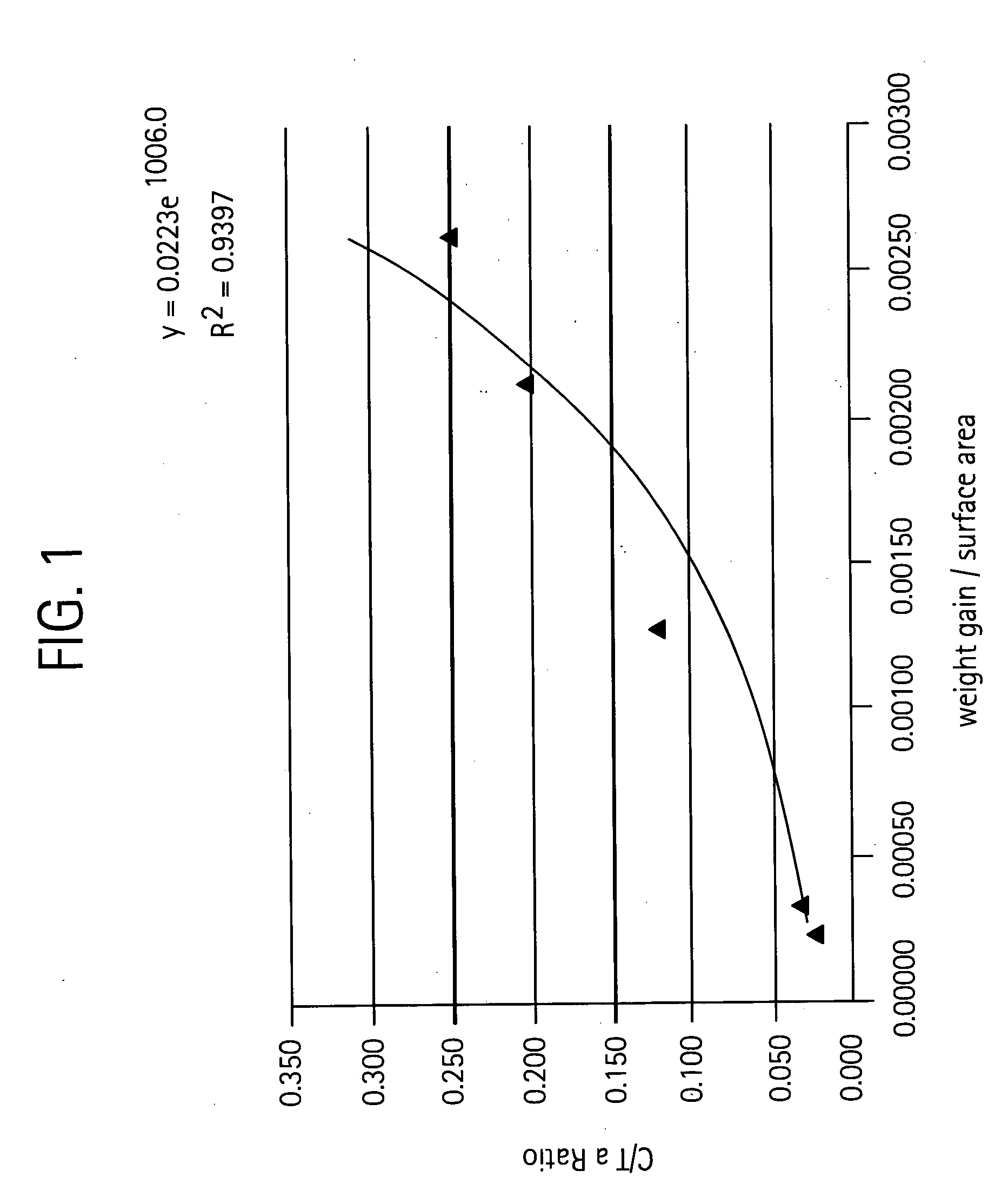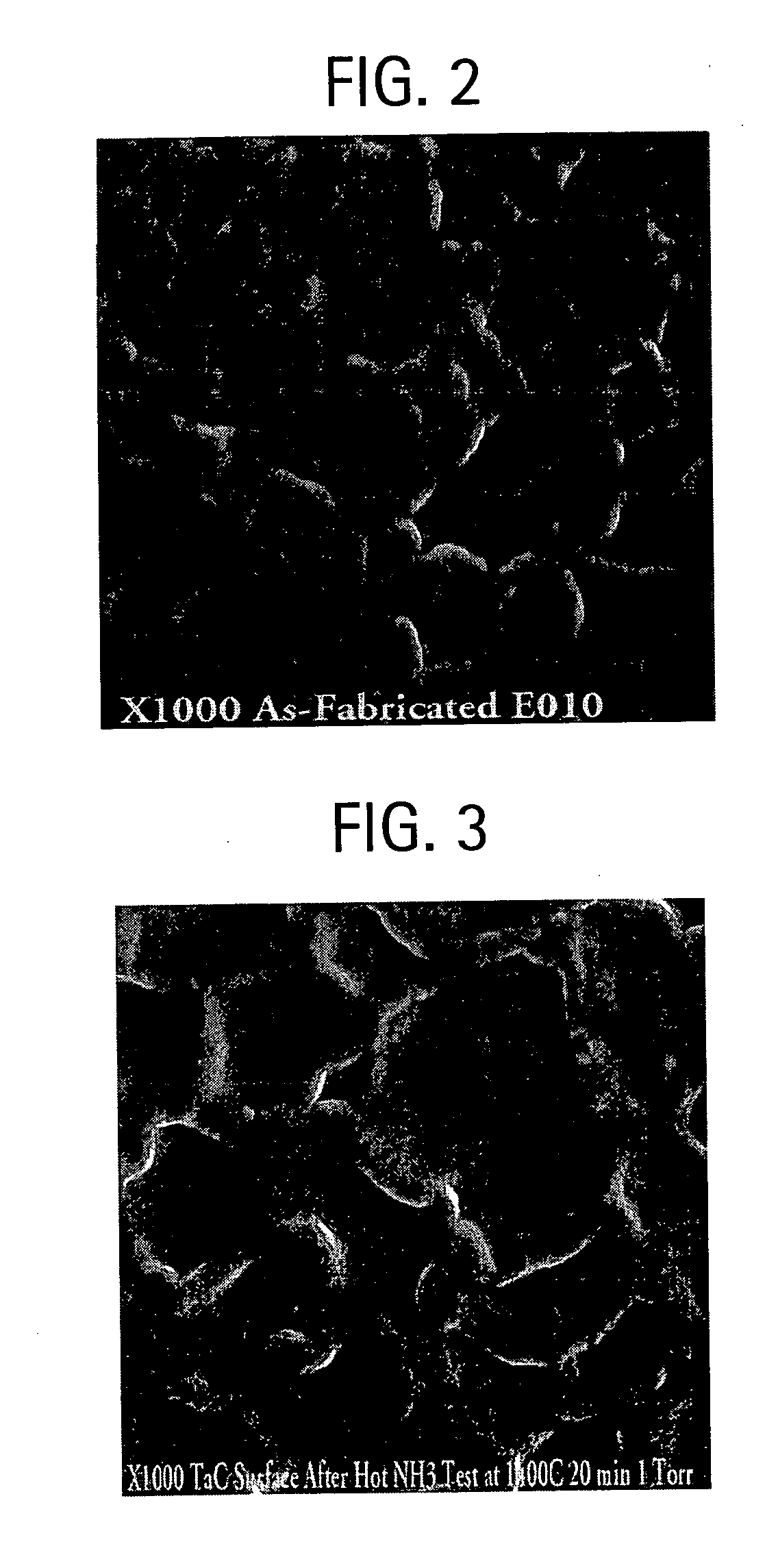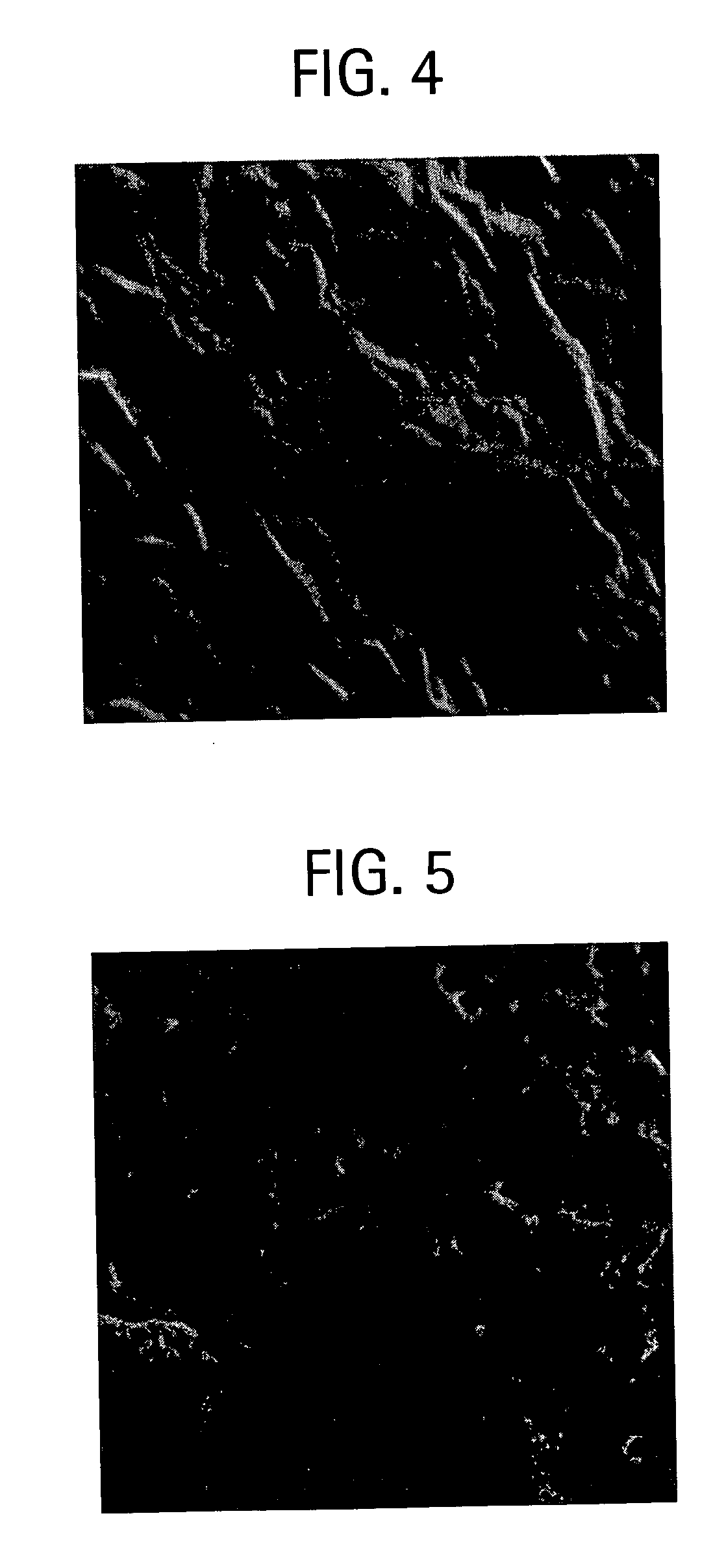Composite refractory metal carbide coating on a substrate and method for making thereof
- Summary
- Abstract
- Description
- Claims
- Application Information
AI Technical Summary
Benefits of technology
Problems solved by technology
Method used
Image
Examples
example 1
[0059] This example encompasses a 3-step process and illustrates the coating characteristics as a result of each step.
Process Conditions: Temperature, time,gas & flow rates, pressure (Gas Flows inProcess Stepslpm; P = pressure)SubstrateNotes1. TaC CoatingHeat up 25-2300° C. in 2-4 hours atGraphiteTaC (15-20 μm thick)on Graphitelow pressures (4-8 mm) under nitrogencoating on surface that isflow (˜2-4 liter per minute)Ta rich at the surface withInject TaC15 vapors and chlorineTa / C atomic ratio of ˜1.5-2300C 100 mm 6 hours1.7 in a 1000 AngstromPurge with N2 and coolthick surfacelayer2. CarburizationHeat Up 25-1600° C. in 60-90 min;TaC coatedDark grey colorof TaC / GraphiteAr = 0.5 lpm; P = 0.5 Torrgraphitegraphite nodules at grain1600C 20 min; CH4 = 0.5 slpm, Ar = 0;boundary. Typical weightP = 0.5 Torrgain = ˜40 mg / 100 cm2.1600C 2 hrs; Ar = 0.5; P = 0.5 Torr(1-2 μm thick)3. NH3Heat Up 25-1400° C.; 20 min; N2 = 0.5,CarburizedWeight Loss ˜0.75ExposureP-250 μ.mTaC coatedmg / 100 cm2.or remo...
example 2
[0061] A graphite substrate is coated with tantalum carbide coating by following process step #1 in Example 1. After checking for coating quality, the coated substrate is heated in a graphite vacuum furnace to 1600° C. in nitrogen. After the temperature is stabilized, methane is introduced for 20 minutes.. This step is followed by diffusion annealing in nitrogen for one hour. In the final step, the coated substrate is exposed to ammonia for a period of 10 minutes as described in Step 3 of Example 1 to remove excess carbon. These steps are repeated five times to build up a strong, coherent, corrosion resistant carbon rich layer of high emissivity. The process temperature may be selected in a range of 1400 to 1800° C. depending on the process time, as lower temperature requires longer annealing time than at a higher temperature. The steps in Example 2 are summarized below.
ProcessStepProcess ConditionsSubstrateNotesCoatingA: Heat up to 1600° C. inTantalum carbidewith TaC2.5 hours, pr...
example 3
[0065] In this example, the coating of Example 2 is exposed to ammonia at 1400° C. for 20 min under 1 torr pressure. FIG. 3 is a micrograph of the TaC coating after hot NH3 test at high temperatures. Similar to the TaC coating as shown in FIG. 2, the grains of TaC in Example 3 with raised thick grain boundaries are clearly observed in the micrographs, and there is no detectable change in the microstructure as a result of hot ammonia exposure.
PUM
| Property | Measurement | Unit |
|---|---|---|
| Fraction | aaaaa | aaaaa |
| Fraction | aaaaa | aaaaa |
| Percent by atom | aaaaa | aaaaa |
Abstract
Description
Claims
Application Information
 Login to View More
Login to View More - R&D
- Intellectual Property
- Life Sciences
- Materials
- Tech Scout
- Unparalleled Data Quality
- Higher Quality Content
- 60% Fewer Hallucinations
Browse by: Latest US Patents, China's latest patents, Technical Efficacy Thesaurus, Application Domain, Technology Topic, Popular Technical Reports.
© 2025 PatSnap. All rights reserved.Legal|Privacy policy|Modern Slavery Act Transparency Statement|Sitemap|About US| Contact US: help@patsnap.com



